Preparing to Evacuate the Horse
If a horse is non-ambulatory it will likely need to be placed onto a Rescue Glide, secured to the glide and transported to a veterinary facility. The first step in this process is to move the horse to where it can be loaded onto the Rescue Glide. That objective is typically accomplished by means of a backwards or forward drag assist.
The objective is to place a strap around the horse and between its legs so that it can be dragged safely. We find the following procedures to be effective.
1. "Floss" a strap under the horse.
Work the strap under the horse using an easy sawing motion. If you have to use straps that have rings on one face, make sure that the rings are facing away from the horse.
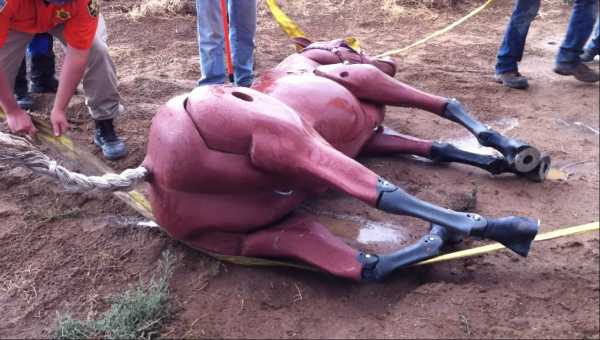
2. Retrieve both ends of the strap.
Establishing a drag assist requires working from the "hoof" side of the horse. Use a pole hook to retrieve the distant end of the strap. Do not step into the area occupied by the hooves to retrieve the strap! The simple act of dragging the strap over the horse could stimulate a kick reflex.
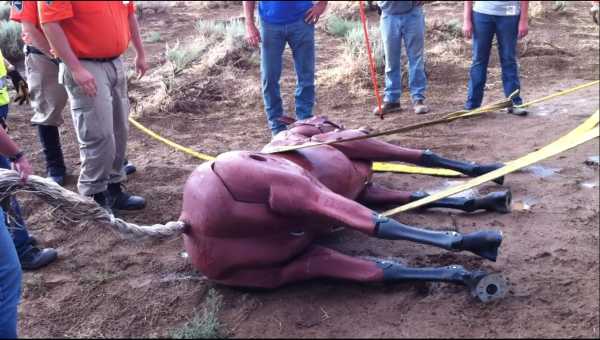
3. Pull the strap between the horse's hind legs.
Using a pole hook, bring the strap back between and behind the horse's hind legs. Do not grab the straps by hand until clear of the horse's strike zone.
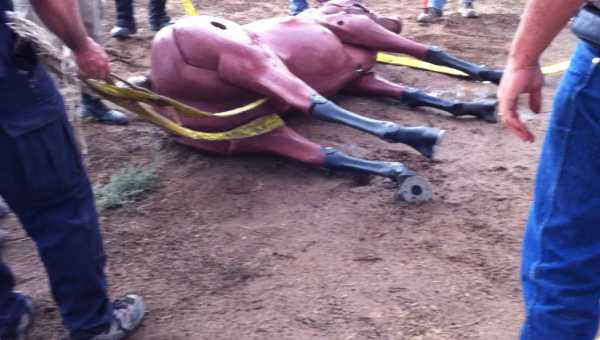
Once the straps are safely behind the horse, haul lines can be attached. However before hauling the horse, make some provision to protect the ground side of the horse's head and eye. Something bulky such as a life vest will provide a cushion and can prevent some pretty serious injuries. Have someone constantly monitor the horse's head while the horse is being moved.
It is also important that sharp objects (rocks, sticks, glass) be removed from the intended drag path of the horse. The spreading of hay or straw can help reduce friction. These are tasks that "extra" people on the scene can safely assist with.
The forward drag assist is roughly similar in logic to the backwards drag assist.
1. "Floss" a strap under the horse.
Work the strap under the horse using an easy sawing motion. Someone should raise the horse's head so that the strap doesn't catch on a halter or injure the horse's down side eye. If you have to use a strap that has rings attached to one face, make sure that the rings are facing away from the horse.
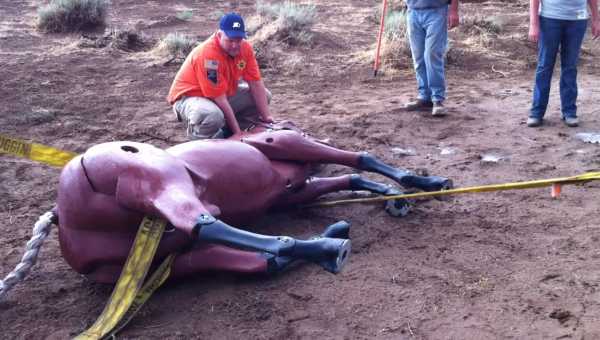
2. Attach a lead to the horse's halter.
When applying a forward drag assist, the horse's head will lead his body. It needs to be kept elevated to prevent damage to his cheek, eye and ear.
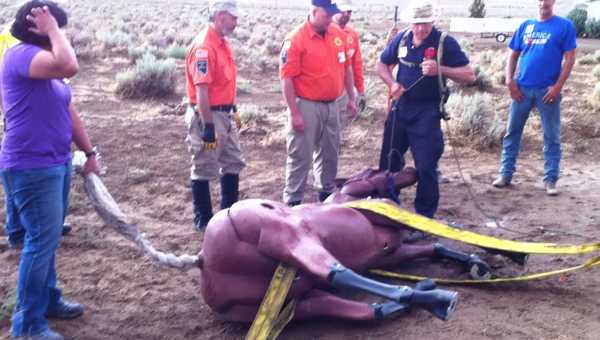
3. Pull the strap between the horse's front legs.
Pass the strap over the horse by means of a hook. Then using the hook to raise a front leg, bring the strap forward between the horse's forelegs. Pull the strap fully forward to be clear of the horse's strike zone.
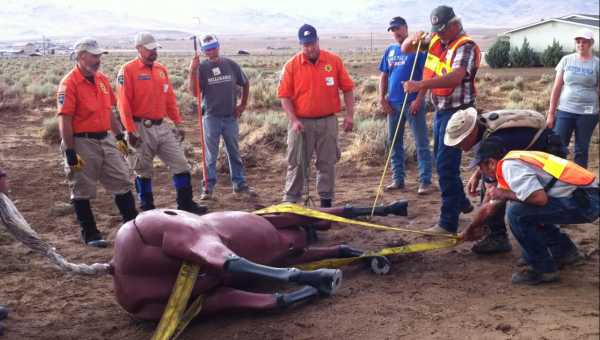
4. Retrieve both ends of the strap.
Retrieve both ends of the strap, using a pole hook if necessary to maintain clearance from the horse's front hooves. Keep the ends of the straps well forward of the horse while attaching haul lines.
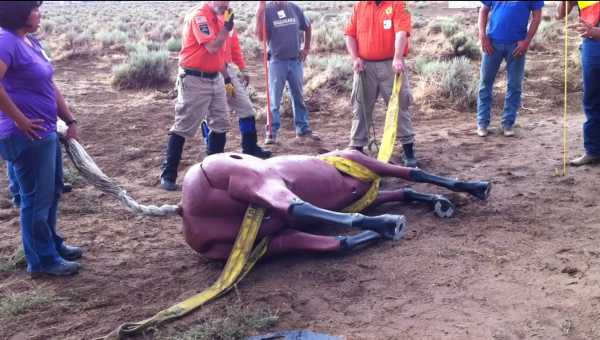
Generally the easiest way to get a horse onto the Rescue Glide is by rolling the horse over, however sometimes it is more advantageous to use the sideways drag assist, particularly when legs are entangled in fencing or other objects. This assist requires both a front and rear strap. Rescuers will need to keep the Rescue Glide from moving while the horse is dragged sideways onto the glide.
Note that the head still requires monitoring and cushioning and/or lifting.
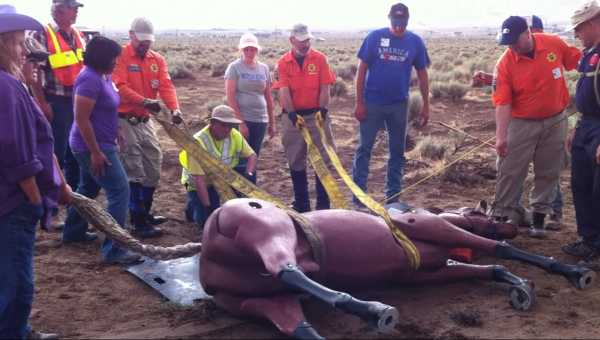
When dragging a horse it is important that one person "call" the haul instructions and be able to be heard by all the people on the haul line so that the drag assist is executed smoothly and safely.
Prusik cords should be used as haul handles as pulling on Prussik cords is safer and far more effective than pulling directly on the haul line.
| 










